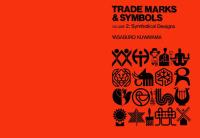International Trade Effects in Malawi and Bostwana [PDF]
INTERNATIONAL TRADE ANALYTICAL REPORT Trade Patterns And Multi-Trade Agreement Membership In SADC Jean B. Nkume 9/28/201
39 0 127KB
Papiere empfehlen
![International Trade Effects in Malawi and Bostwana [PDF]](https://vdoc.tips/img/200x200/international-trade-effects-in-malawi-and-bostwana.jpg)
- Author / Uploaded
- John Nkume
Datei wird geladen, bitte warten...
Zitiervorschau
INTERNATIONAL TRADE ANALYTICAL REPORT Trade Patterns And Multi-Trade Agreement Membership In SADC Jean B. Nkume 9/28/2010
INTRODUCTION The Southern African Development Community (SADC) was previously known as the Southern African Development Coordination Conference (SADCC) which was created in 1980 to reduce the economic independence on South Africa. The transformation to SADC was established on the 17 August 1992 giving it a legal character (SADC, 2010). The purpose of this assignment is to use economic concepts, theories and as well as quantitative methods to compare and contrast the international trade flows of Botswana and Malawi. The main objectives of SADC is the socio-economic development of the Southern Africa region through the reduction of poverty; the improvement of standard of living; promotion of peace ,security and productive employment; regional integration; protection of environment and sustainable use of natural resources and finally through strong historical, social and cultural affinities between people(SADC, 2010 ). The key reason for joining such an organization is the benefits gained from economic cooperation and regional integration among members. Between 2001 and 2008 the major exports of Botswana were mainly mining products contributing to more than 70 % of total export this includes diamonds, copper and nickel. Whilst its major imports are machinery and electrical equipment; fuel; and food, beverage and tobacco contributing to more than 40 % of total import (CSO, 2010). The main export partner of Botswana is the United Kingdom with a share of more than 60 % of total export followed by South Africa, Zimbabwe and Norway. Its main import partners are those countries in the Southern African Customs Union (SACU) with South Africa being one of the highest countries it imports from about 80% of total import followed by Asia especially China and the European Union (EU) (CSO, 2010). Malawi has several main exports tobacco, sugar and tea while its main imports are petroleum based products such as fertilizers and transport equipment (Intracen, 2010). There are at least
three major import and export partnerships in consumables and raw materials respectively that Malawi has with several countries such as South Africa followed by the China, UK, USA and Mozambique in terms of imports only (NSO, 2010). There are various theories that can be used to explain the pattern of trade in both Botswana and Malawi however the main theories used here will be: •
Ricardo’s theory which states that a country will produce goods in which it has a relative advantage in and that will export goods that it can produce at a low opportunity cost and import those with high opportunity cost.
•
The H-O theory states that a country, in our case Botswana and Malawi, will export products in which it has an abundant source of factors of production which are used intensively and import products that they have scarce factors of production in.
•
The gravity model which states that flow of trade increases for two countries as their economic size increases, geographic distance lower, and other negative trade factors get are eradicated.
In addition to explaining the trade patterns the concept of intra industry trade (IIT) with some of the commodities is explored. Intra industry trade involves trade of similar products between countries (Pugel, 2009).
Pattern of trade in Botswana and Malawi Commodity pattern of export average 2000-2008 Botswana Botswana has an abundance of natural resources such as diamonds and nickel and its export trade pattern is consistent with the H-O theory. Natural resources represent more than 80% of total export. The Ricardo theory is also consistent because Botswana can produce these natural resources at low opportunity cost. However, Botswana is at risk of experiencing immiserizing growth because it relies mainly on mineral products for its export and a decline in the price of these products will negatively affect Botswana terms of trade.
Source: Makochekanwa, A. and Jordaan, A.C 2001-2008
Commodity pattern of import average 2004-2008 Botswana Although Botswana is endowed with diamonds and other natural resources it is an agricultural country and must import manufactures products as shown in the graph above which is consistent with Ricardo theory and H-O theory. The gravity model is also consistent with Botswana trade as it mainly trades with SACU (low geographical distance) and within SACU, South Africa (high GDP).
Source: http://www.cso.gov.bw/
Commodity pattern of export average 2001-2008 Malawi Malawi is a labor abundant country and export products which use labor intensively such as tobacco and sugar which is constant with the H-O theory and Ricardo theory. Malawi is also at risk of experiencing immiserizing growth because it relies mainly on tobacco and sugar. Moreover according to the H-O theory, Malawi would import products that are capital intensive and this is shown in the graph below. The import products include vehicles and machinery. As the gravity model mainly explains bilateral trade, it is consistent with trade between South Africa and Malawi. However, the gravity model is unable to explain the trade between Malawi and UK, or Malawi and USA.
Source: www.nsa.malawi.net
Commodity pattern of import 2001-2008 Malawi
Source: www.nso.malawi.net
Net export of Botswana 2001 to 2008 in millions of dollars As it is shown in the column chart below, Botswana net export has been positive from 2001 to 2008 except for 2002 and 2003.The positive values are principally due to the high price of mineral products such as diamonds and nickel. Botswana’s term of trade have been improving over the past years
Source: www.trademap.org
Net export of Malawi 2001 to 2008 in millions of dollars Malawi has experienced negative net export from 2001 to 2008 which show that it has imported more than exported which is a characteristic of developing countries that rely on the primary products such as agricultural products for export. Malawi terms of trade has worsened over the years.
Source: www.trademap.org
The following formula 1- |X-M|/X+M has been used to contrast and compare the IIT share of Malawi and Botswana. Products
Botswana ITT share
Malawi ITT share
Tobacco
0.036
0.26
Sugar
0.42
0.097
Diamonds
0.041
0
Nickel
0.0044
0.31
Fuel and Oil
0.032
0.008
Machinery
0.156
0.09
Source: www.trademap.org
In the table above, it is shown that most of the intra industry trade shares of Malawi and Botswana are low and low trade share is common characteristic of developing countries.
QUESTION OF MULTIPLE MEMBERSHIPS According to Chacha (2008), if a member nation of SADC has multiple memberships in various trade agreements it will weaken its commitment to trade, resulting in low levels of trade within the SADC bloc. The research conducted by Krueger (1997) shows that applying rules of origin from a single RTA is manageable; but, with multiple memberships, various rules of origin are applied which becomes cumbersome and problematic for the nations involved; thus, causing a delay of the flow of goods from one nation to another. This delay will not only limits trade ties, but will also have the effect of limiting any advances towards further elimination or undercut of tariffs and will weakens cooperation among SADC members (ibid). But this again depends upon who is at the receiving end of it all. In some cases multiple memberships may be advantageous to a country. South Africa is both a member of SACU and SADC. This mean that it has two markets in which it can buy and sell its good and services to, this is a form of trade diversion (Pugel T, A 2009). Therefore, multiple memberships in various regional trade agreements could limit the attainment of the goals set out by SADC members in the future and intra-regional trade within the SADC bloc with disastrous consequences. Yet again it could a big economic boost for a member, which depends if one decides to pursue self interest instead of those goals of the trade blocks those who have a high GDP like South Africa have the capacity to do so.
Reference List •
Chacha, M. (2008) Regional integration and trade: overlapping membership and the challenges of regionalism in Africa [internet]. Available from: < http://www.allacademic.com//meta/p_mla_apa_research_citation/2/5/2/7/7/pages252772/ p252772-1.php > [Accessed on 7 September 2010].
•
Central Statistics Office (2010) Trade Statistics. Central Statistics Office (CSO) [internet]. Available from: http://www.cso.gov.bw/index.php? option=com_content&task=view&id=66&Itemid=56 [Accessed on 27 September 2010].
•
International Trade Center (2010) Trade Map- Trade Competitiveness Map: List of products commercialized by Malawi [internet]. Available from: http://www.trademap.org/countrymap/Product_SelCountry_TS.aspx [Accessed on 27 September 2010].
•
International Trade Center (2010) Trade Map- Trade Competitiveness Map: List of products commercialized by Botswana [internet]. Available from: [Accessed on 27 September 2010].
•
International Trade Center (2010) Trade Competitiveness Map. International Trade Center [internet]. Available from:
[Accessed on 25 September 2010].
•
Jakobeit, C. , Hartzenberg, T. And Charalambides, N. (2005) Overlapping Membership in COMESA, EAC,SACU and SADC Trade Policy Options for the Region and for EPA Negotiations. Eschborn, Germany: Deutsche Gesellschaft für Technische Zusammenarbeit (GTZ).
•
Krueger, A. O. (1997) Problems with Overlapping Free Trade Areas: in Regionalism Versus Multilateral Trade Arrangements .Eds Takatoshi It o and Anne O. Krueger. Chicago: University of Chicago Press. P9-24
•
Makochekanwa, A. and Jordaan, A.C.(no date) Identifying the trade theory model behind Botswana’s sectoral export [internet].Available from: http://www.africametrics.org/documents/conference08/day1/session2/makochekanwa_jor daan.pdf [Accessed on 25 September]
•
National Statistic Office of Malawi (2010) Statistical year book 2009. National Statistic Office of Malawi(NSO) [internet]. Available from :< http://www.nso.malawi.net/data_on_line/general/yearbook/Yearbook_2009/yearbook_20 09.html> [Accessed on 26 September).
•
Southern African Development Communities (2010) Introducing SADC. Southern African Development Communities (SADC)[internet]. Available from: http://www.sadc.int/index/browse/page/715 [Accessed on 23 September 2010].
•
Razeen, S. (2006) Free Trade Agreements and the Prospects for Regional Integration in East Asia. Asian Economic Policy Review. P 306-321.
•
Pugel,T.A. (2009) International economics. 14th Ed. New York. McGraw-Hill.









